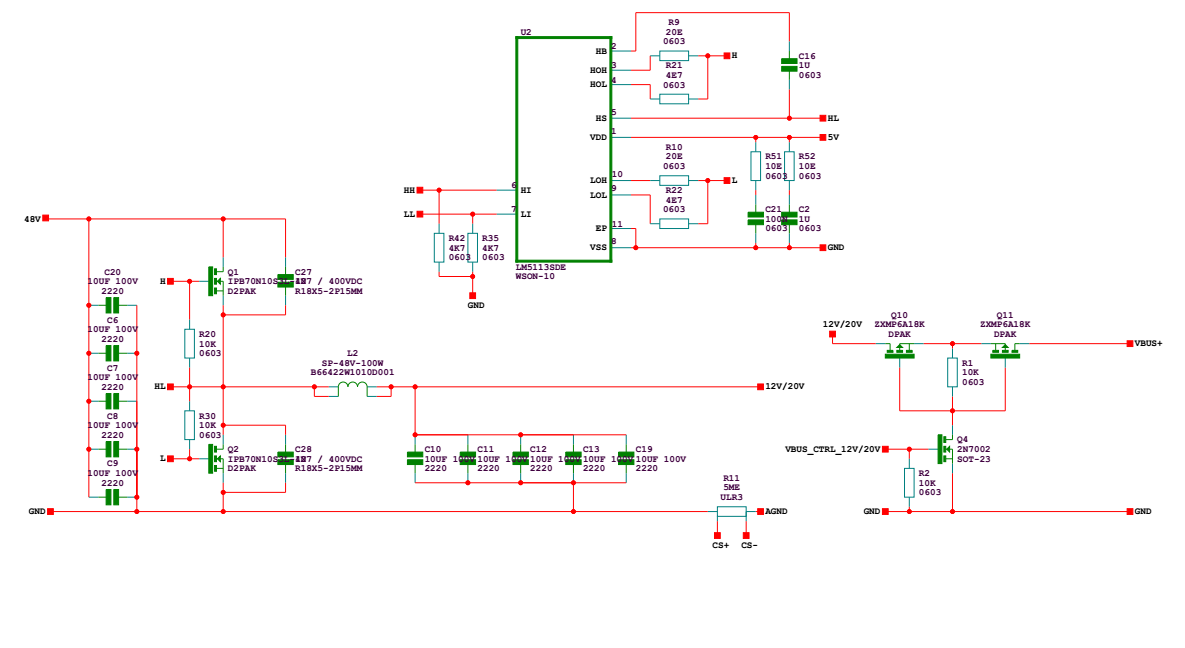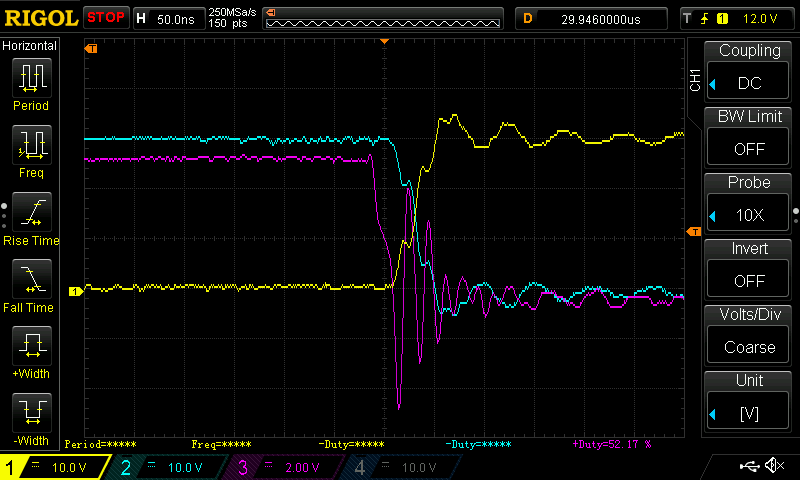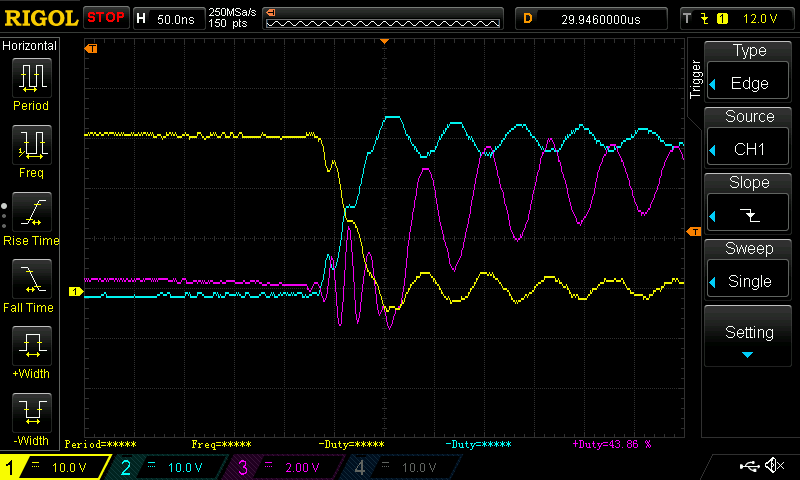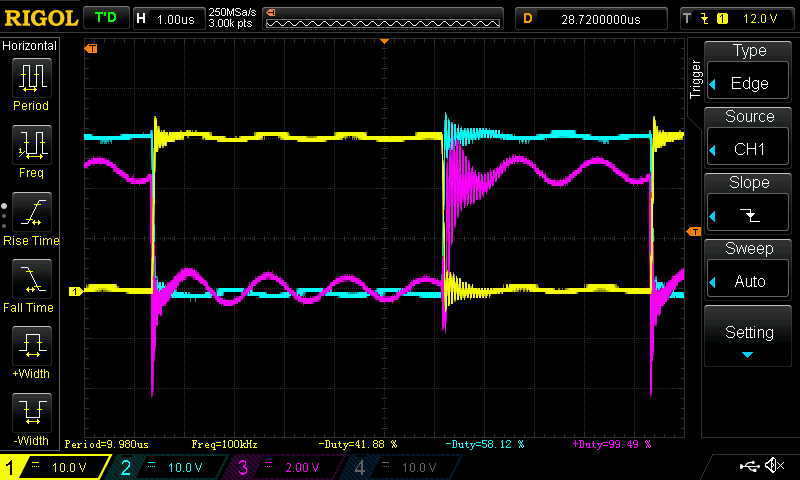Dear Brett,
Unfortunately i'm coming back with another problem.
The LM5113 is generating the correct PWM waveforms and the mosfets work fine.
I'm using it in a synchronous buck topology. However, the gate driver somehow spikes above the threshold voltage of the mosfets at the falling edge, and the mosfets turn on again.
I tried testing only the gate circuit with an external low signal from the PWM controller and then apply externally a voltage at the mosfet gate, to see whether the LM5113 keeps the signal at the voltage level of the internal transistors, but this is not the case. The gate voltage spikes exactly at the external voltage, which means that the mosfet gate is open.
Shouldn't the LM5113 clamp the voltage at the internal transistor level, to prevent unwanted turn-on?
Originally i thought that it was a bad grounding problem, so i re-routed a new PCB with a very good ground connection, but still the problem remains.
What can be the cause of this, and is there a way to fix it?
P.S: i tried using an external clamp with diode and transistor, but still the same problem.
-
Ask a related question
What is a related question?A related question is a question created from another question. When the related question is created, it will be automatically linked to the original question.





